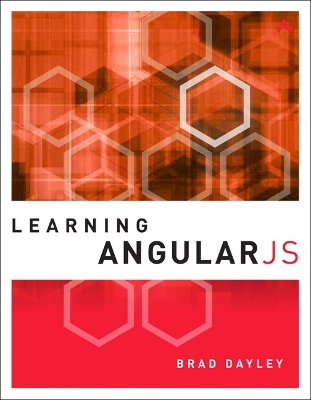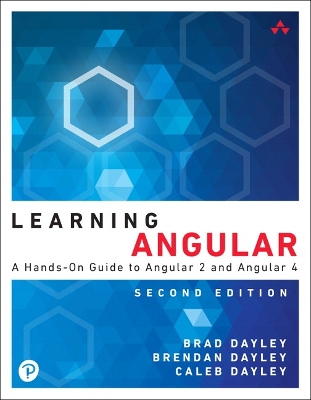Learning
2 total works
Learning AngularJS
Get started with AngularJS web development fast
AngularJS is one of the most exciting and innovative new technologies emerging in the world of web development. Designed to simplify the development and testing of web applications, it also provides structure for the entire development process.
Websites are no longer simple static content–instead, websites have become much more dynamic, with a single page often serving as the entire site or application. And AngularJS allows web developers to build the necessary programming logic for such applications directly into a web page, binding the data model for the client web application to backend services and databases. AngularJS also allows the extension of HTML so that the UI design logic can be expressed easily in an HTML template file.
Learning AngularJS shows you how to create powerful, interactive web applications that have a well-structured, reusable code base that will be easy to maintain. You’ll also learn how to leverage AngularJS’s innovative MVC approach to implement well-designed and well-structured web pages and web applications.
- Understand how AngularJS is organized and learn best practices for designing AngularJS applications
- Find out how to define modules and utilize dependency injection
- Quickly build AngularJS templates with built-in directives that enhance the user experience
- Bind UI elements to your data model, so changes to your model and UI occur automatically in tandem
- Define custom AngularJS directives that extend HTML
- Implement zoomable images, expandable lists, and other rich UI components
- Implement client-side services that interact with web servers
- Build dynamic browser views to provide even richer user interaction
- Create custom services you can easily reuse
- Design unit and end-to-end tests for AngularJS applications
1 Jumping Into JavaScript
- Setting Up a JavaScript Development Environment Using Node.js
- Defining Variables
- Understanding JavaScript Data Types
- Using Operators
- Implementing Looping
- Creating Functions
- Understanding Variable Scope
- Using JavaScript Objects
- Manipulating Strings
- Working with Arrays
- Adding Error Handling
- Why AngularJS?
- Understanding AngularJS
- An Overview of the AngularJS Life Cycle
- Separation of Responsibilities
- Integrating AngularJS with Existing JavaScript and jQuery
- Adding AngularJS to Your Environment
- Bootstrapping AngularJS in an HTML Document
- Using the Global APIs
- Creating a Basic AngularJS Application
- Using jQuery or jQuery Lite in AngularJS Applications
- Looking at Modules and Dependency Injection
- Defining an AngularJS Module Object
- Creating Providers in AngularJS Modules
- Implementing Providers and Dependency Injection
- Applying Configuration and Run Blocks to Modules
- Understanding Scopes
- Implementing Scope Hierarchy
- Understanding Templates
- Using Expressions
- Using Filters
- Creating Custom Filters
- Understanding Directives
- Using Built-in Directives
- Understanding Custom Directive Definitions
- Implementing Custom Directives
- Browser Events
- User Interaction Events
- Adding $watches to Track Scope Change Events
- Emitting and Broadcasting Custom Events
- Understanding AngularJS Services
- Using the Built-in Services
- Using the $q Service to Provide Deferred Responses
- Understanding Custom AngularJS Services
- Integrating Custom Services into Your AngularJS Applications
- Building a Tabbed View
- Implementing Draggable and Droppable Elements 204 Adding a Zoom View Field to Images
- Implementing Expandable and Collapsible Elements
- Adding Star Ratings to Elements
- Deciding on a Testing Platform
- Understanding AngularJS Unit Tests
- Understanding AngularJS End-to-End Testing
Learning Angular, Second Edition
A Hands-On Guide to Angular 2 and Angular 4
Learning Angular teaches modern application development with Angular 2 and Angular 4. It begins with the basics of Angular and the technologies and techniques used throughout the book, such as key features of TypeScript, newer ES6 syntax and concepts, and details about the tools needed to write professional Angular applications.
The reader will next build an Angular application from scratch while learning about the primary pieces of an Angular application and see how they work together. Using lots of examples, the core parts of Angular will be introduced, such as Components, the Router, and Services.
The book also covers techniques like server-side rendering and how to incrementally add Angular 2+ features to existing AngularJS applications. Finally, the reader will gain insight into advanced skills that should be part of any professional Angular developer’s toolkit such as testing, tooling options, and performance tuning.
- Understand how Angular is organized and learn best practices for designing Angular applications
- Quickly build Angular templates with built-in directives that enhance the user experience
- Bind UI elements to your data model, so changes to your model and UI occur automatically in tandem
- Define custom Angular directives that extend HTML
- Implement zoomable images, expandable lists, and other rich UI components
- Implement client-side services that interact with web servers
- Build dynamic browser views to provide even richer user interaction
- Create custom services you can easily reuse
- Implement rich UI components as custom Angular directives
Contents at a Glance
Introduction
- What is Angular
- Why Use Angular
- Who this Book is For
- How to Use this Book
- Getting the Source Code
Chapter 1: Jumping into JavaScript
- Setting Up a JavaScript Development Environment
- Defining Variables
- Understanding JavaScript Data Types
- Using Operators
- Implementing Looping
- Creating Functions
- Understanding Variable Scope
- Using JavaScript Objects
- Manipulating Strings
- Working with Arrays
- Adding Error Handling
Chapter 2: Jumping into TypeScript
- Learning the Different Types
- Understanding Interfaces
- Implementing Classes
- Implementing Modules
- Understanding Functions
Chapter 3: Getting Started with Angular
- Why Angular?
- Understanding Angular
- Separation of Responsibilities
- Adding Angular to Your Environment
- Using the Angular CLI
- Creating a Basic Angular Application
Chapter 4: Angular Components
- Component Configuration
- Building the Template
- Using Constructors
- Using External Templates
- Implementing Directives
Chapter 5: Expressions
- Using Expressions
- Using Pipes
- Building a Custom Pipe
Chapter 6: Data Binding
- Understanding Data Binding
- Interpolation
- Property Binding
- Attribute Binding
- Class Binding
- Style Binding
- Event Binding
- Two-Way Binding
Chapter 7: Built-in Directives
- Understanding Directives
- Using Built-in Directives
- Structural Directives
- Attribute Directives
Chapter 8: Custom Directives
- Creating a Custom Attribute Directive
- Creating a Custom Directive with a Component
Chapter 9: Events and Change Detection
- Using Browser Events
- Emitting Custom Events
- Using Observables
Chapter 10: Implementing Angular Services in Web Applications
- Understanding Angular Services
- Using the Built in Services
- Sending HTTP GET and PUT Requests with the http Service
- Implementing a Simple Mock Server Using the http Service
- Changing Views with the router Service
- Implementing a Router with a Navigation Bar
- Implementing a Router with Parameters
Chapter 11: Creating Your Own Custom Angular Service
- Integrating Custom Services into Angular Applications
- Implementing a Simple Application That Uses a Constant Data Service
- Implementing a Data Transform Service
- Implementing a Variable Data Service
- Implementing a Service that Returns a Promise
- Implementing a Shared Service
Chapter 12: Having Fun with Angular
- Implementing an Angular Application That Uses the Animation Service
- Implementing an Angular Application That Zooms in on Images
- Implementing an Angular Application That Enables Drag and Drop
- Implementing a Star Rating Angular Component

